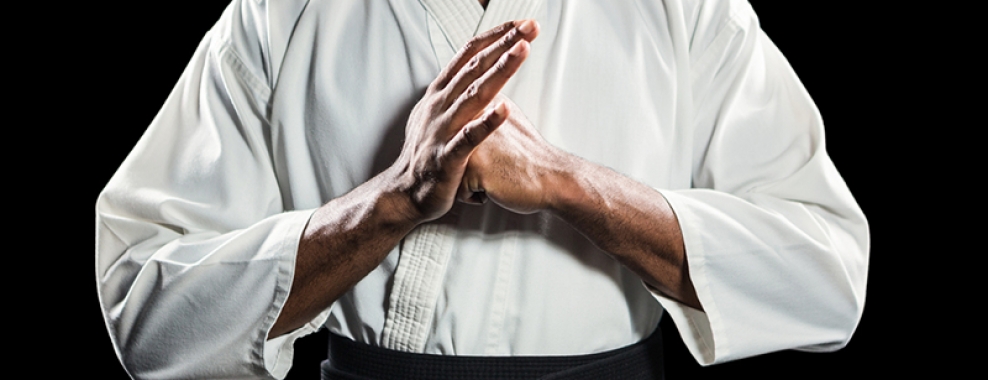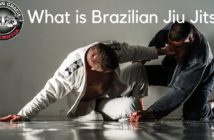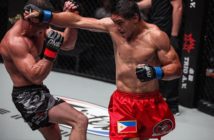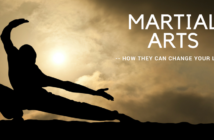by Phillip Starr
No, the title of this article isn’t a typo. It means what it says. It is an introduction into my thoughts about how and why the Japanese, Okinawans, Koreans, and Chinese practice their various martial forms.
Japan under Tokugawa
With the unification of Japan under the Tokugawa shogunate, civil war in Japan came to an end. The once highly-independent lords now served Tokugawa and had no need for the maintenance of large private armies. They “downsized” their military forces considerably and many samurai suddenly found themselves unemployed. A number of them opened their own dojos in an effort to keep food on the table and a roof over their heads. They had been taught, practiced, and still taught the “jutsu” forms of their respective disciplines. These arts are focused exclusively upon practical combatives without any concern for the student’s spiritual development or anything else. They were, after all, originally developed to ensure the survival of the clan.
With the passage of time and the relative disintegration of the “clans”, many of these arts morphed into “do” forms; martial disciplines that focus not only on developing fighting skills but also on the development of character and ultimately, spiritual awareness.
A highly disciplined people
The Japanese have always been a highly-disciplined people and their culture has always had a militaristic tendency. The samurai of days long past were, and still are, held in very high esteem. And although no one carries swords nowadays, feudal Japan is still very much alive. Ball-point pens have replaced swords. And almost all of the CEO’s in modern Japan are descended from samurai families…which means that they are, in fact, samurai themselves.
And so they have continued to hold their traditional martial ways in the highest regard although they are now considered as being somewhat old-fashioned. For a time, the numbers of practitioners of the budo dwindled but their numbers are once again on the rise. They are, after all, a very large part of what has kept Japan Japanese! Many executives of various corporations bow to their teachers and engage in the practice of martial arts such as kendo, karate, and aikido in dojos that are maintained inside the buildings where they work! It is thought that the regular practice of these arts helps employees stay healthy, reduce stress, improve focus, and ultimately, improve productivity in the workplace.
Martial forms
Many martial forms have been modified for the competition arena in Japan. These include kendo, karatedo, and of course, judo (which was originally developed from jujutsu as a sport method). There are numerous Japanese instructors who feel that the “sportification” of their arts has contributed to an overall degeneration and I would have to say that for all intents and purposes, that’s true. However, the Japanese strive to maintain the spirit of the budo (even in competition) and this has helped prevent their arts from spiraling downward, out of control. It’s a site better than what we see in the West, that’s for sure!
Okinawans
Unlike the Japanese, the people of Okinawa never developed much of a militaristic culture. Although they did have a warrior class, it was a far cry from that of Japan. The warrior’s first obligation was to protect his emperor and country. After that, his loyalty was to his family. In some ways, much of early Okinawan culture mirrored that of its closest ally; China. Many Chinese visited or moved to Okinawa and numerous Okinawans spent a good deal of time in China, so it’s only natural that they learned Chinese forms of martial arts. This is especially true of southern Chinese martial arts systems. And although most of us were taught that the Okinawans didn’t learn Japanese martial arts, the truth is far different. Several well-known Okinawans traveled to Japan and became top-notch adepts at swordsmanship; several were even awarded menkyos (licenses to teach)!
Okinawan martial ways seem to focus primarily on self-defense. They do engage in competitions but rarely do they train primarily for sport. In the past, the emphasis was almost wholly on combat practicality. This matches up with the “jutsu” forms of Japanese martial arts, which were intended to preserve the safety and perpetuation of the “clan.” With the passing of time the Okinawan forms, like the Japanese disciplines, were gradually transformed into “do” forms, emphasizing not only combative practicality but the development of character and spirit as well.
Korean martial arts
Korean martial arts were, like all other martial arts, originally focused on self-defense. The Koreans didn’t develop a warrior culture as did the Japanese although for a time they were served by the “hwarang”, which means “flower boys.” I saw several of you smile… and yes, they did use make-up and perfume but they also trained assiduously in horsemanship, archery, and swordsmanship. Comprised largely of young men from the kingdom of Silla (when Korea was divided into three kingdoms), very little was known about them until the end of WWII in 1945. Following the unification of its three kingdoms (the fighting was won by the kingdom of Koryo…thus, the name, “Korea”), people turned away from appreciating their military. In fact, there was a saying that perfectly expressed their attitude; :One does not make nails out of the best steel, and one does not make soldiers out of the best men.” This kind of feeling contributed to the eventual demise of many Korean martial forms.
The original Korean martial arts were heavily influenced by their Chinese neighbors and almost none of them. such as cha-bi, survived to the present day. Current Korean martial ways include arts such as taekwondo, tangsoodo, and a handful of other spin-offs. Their founders were military men, so it was only natural that the arts they learned (mainly from the Japanese) were taught to their troops. Training was extremely rugged and could be said to have been quite brutal.
Following the war in Vietnam (in which several ROK units were deployed), Korean instructors saw the huge demand for Asian martial arts in the West. They were only too happy to accommodate. And as tournaments became more and more popular in the West, the majority of Korean martial arts teachers modified their arts to better suit them to the contest arena. This was done to such a degree that it is now very difficult to find a Korean martial arts school that isn’t almost wholly sport-oriented.
China never embraced a warrior culture
China has never embraced a warrior culture. On the contrary, the Chinese seemed to place great emphasis on other arts such as painting, calligraphy, poetry, music, and dancing. Certainly, martial arts teachers were highly respected but they weren’t held in the same esteem as, say, a well-known painter or poet. Martial arts were practiced as forms of self-defense. A number of styles were developed for teaching to military troops as well. Although there were occasional contests of sorts, they were rather rare and never became very popular.
Very rarely did members of the upper class participate in martial arts practice. This is still true today. Such rigorous activities were only marginally popular with the middle class as well. However, member of the lower middle class and lower classes enjoyed this kind of vigorous practice. Many of them had had only minimal educations (if any at all…a good number of them were illiterate), so the odds of getting a decent job were rather small. However, if they could become skilled at martial arts they might well land a job as a bodyguard or convoy escort.
Martial arts instruction impossible to find
During WWII, martial arts instruction was all but impossible to find. China was in a state of total upheaval and after the end of the war, things only got worse in so far as martial arts are concerned. The establishment of the People’s Republic of China ended the open practice of any martial discipline; such things were strictly forbidden until the end of the Cultural Revolution in 1976. China realized that its martial arts were, in fact, a great treasure and they sought to find ways to popularize it. Among other things, this led to the development of contemporary “wushu” (which means “martial arts”) that combined martial arts movements with gymnastics and Chinese opera. However, although modern wushu did become quite popular both in China and the West, the traditional martial ways entered a headlong dive.
The spirit bled out leaving a skeleton
Currently, there are very few teachers of the traditional martial ways left in China and almost none of them possess all of the information regarding the system that they practice. Soccer and basketball are the most popular sports and “real” kung-fu is something that youngsters read about in comic books. China’s entrance onto the world stage at the beginning of the 20th century and the direction it took afterwards mortally wounded the once-legendary traditional martial arts. Their energy and spirit bled out, leaving behind an empty corpse, which has now been reduced to little more than a skeleton.





2 Comments
“…Their energy and spirit bled out, leaving behind an empty corpse, which has now been reduced to little more than a skeleton.”
Living in China, I can’r say I agree with this statement. Is is based on specific, concrete evidence? If it was based on, say , extensive travel inside China I would give it more weight.
These would be the opinions of Phillip Starr. I personal also do not fully agree.